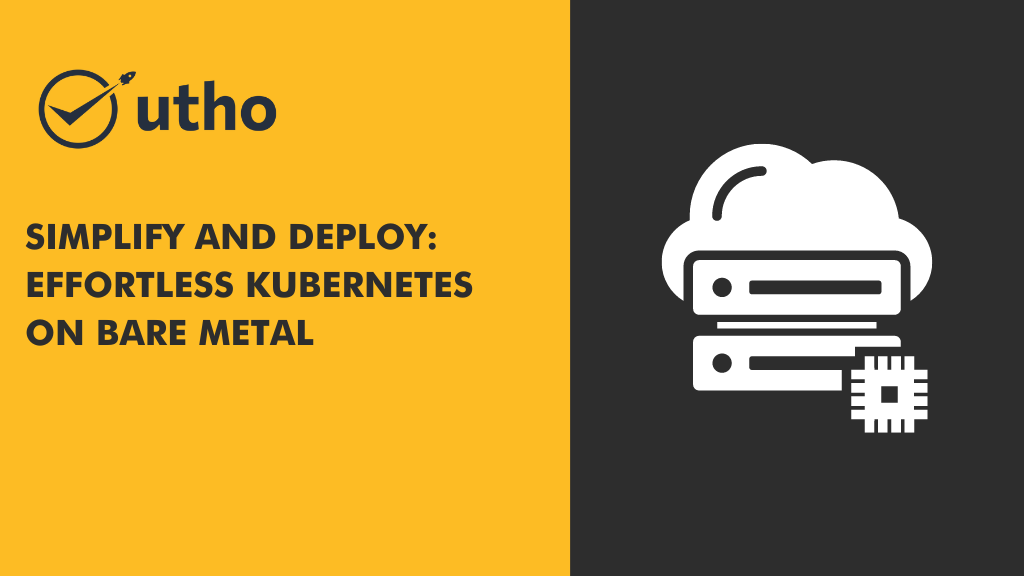Running Kubernetes directly on bare metal servers presents several benefits, such as improved performance and reduced costs. While it may not always be the ideal choice, especially without the right infrastructure, it's a worthwhile option to explore.
In the following guide, we'll discuss important factors to consider when opting for bare-metal Kubernetes deployment. Additionally, we'll outline the steps to plan and set up a bare-metal Kubernetes cluster, ensuring optimal performance and cost-effectiveness.
Comparing Kubernetes Deployment Choices: Bare Metal vs. Virtual Machines
Deploying Kubernetes on bare metal means setting up a cluster using physical servers instead of virtual machines.
If you're deploying Kubernetes on-premises or creating a self-managed cluster on a cloud provider's infrastructure-as-a-service (IaaS) platform, you have the option to configure your nodes on bare-metal servers instead of VMs. This approach allows you to run Kubernetes directly on bare metal.
(All Kubernetes nodes run on bare-metal servers. The distinction lies in whether the node is bare metal or VM-based. In the case of bare metal, there's no hypervisor separating the node from the underlying server. Conversely, a VM-based node operates on top of a physical server.)
Benefits of Running Kubernetes Directly on Bare Metal
Running Kubernetes on bare metal is preferred for two primary reasons: cost-effectiveness and enhanced performance.
Cost
Opting for bare-metal nodes in your Kubernetes cluster can lead to lower total cost of ownership due to several factors:
No Virtualization Software Costs: You eliminate expenses associated with virtualization software.
Simplified Management: Maintenance becomes easier without a virtualization layer, reducing labor costs.
No Hypervisor Overhead: All server resources are dedicated to running workloads, resulting in lower infrastructure costs.
The savings from avoiding virtual machines (VMs) for Kubernetes can be substantial. According to Utho, Kubernetes running on VMs can incur up to 30% higher costs compared to bare metal. However, actual savings vary based on workload types and cluster configurations.
Management
Bare-metal Kubernetes offers enhanced control and streamlines administration in several key aspects:
Network Configuration: With virtualized infrastructure removed, setting up networking becomes simpler in bare-metal Kubernetes.
Troubleshooting: Bare-metal infrastructure reduces complexity, making troubleshooting more straightforward. Identifying issues is easier without the added layer of virtualization.
Automation and Deployment: Automating services and deploying software on bare-metal clusters is often simpler due to the absence of a virtualized infrastructure layer.
Performance
When it comes to performance, bare-metal Kubernetes offers significant advantages.
According to trusted sources, that bare metal Kubernetes experiences three times lower network latency. Additionally, a study by trusted sources found that containers running on bare metal outperform those on VMs by 25-30%. It's important to highlight that the research focused on standalone Docker containers, not those operating within a Kubernetes cluster.
These performance disparities between bare metal and VM-based environments might seem surprising, considering that hypervisor overhead typically consumes only around 10% of total infrastructure resources.
However, performance hits in virtualized environments aren't solely due to hypervisor overhead. You also incur resource consumption from guest operating system environments, which utilize memory and CPU even during idle periods. Moreover, in multi-tenant VM environments, noisy-neighbor issues can arise, impacting performance across VMs sharing the same server. If VMs are managed by an orchestrator on the host server, additional resource consumption occurs.
Deploying bare-metal servers within an edge architecture can significantly boost performance by leveraging the efficiency of bare metal and the low latency characteristic of edge servers.
Another critical factor affecting performance is the application's reliance on access to bare-metal resources. If your Kubernetes-hosted applications can benefit from direct access to hardware devices such as GPUs, deploying on bare metal can lead to substantial performance gains.
Additionally, it's essential to recognize that virtualization introduces another layer to your software stack, which could potentially cause performance issues if it malfunctions. A hypervisor crash that affects a node could disrupt the resources provided to your Kubernetes cluster, potentially impacting the performance of applications running within Kubernetes.
Considerations and Challenges in Bare-Metal Kubernetes Deployment
Bare-metal Kubernetes clusters have two main drawbacks: management complexity and resilience to node failures.
Management
In comparison to bare-metal servers, managing VMs tends to be simpler, as IT professionals are more familiar with tools for virtualized and cloud-based environments. With scripts or VM orchestration tools, you can swiftly deploy numerous VMs using prebuilt images. These images can also be used for VM backups and restoration in case of failure. Most virtualization platforms offer snapshotting features, enabling you to save VM states at different points in time, along with automated failover tools for restarting failed VMs.
While similar functionality exists for bare-metal servers, implementation is notably more complex. It's possible to create Linux server images for provisioning additional servers, or to develop custom Bash scripts for automated failover. However, building and maintaining such tooling demands significant effort and isn't as straightforward as with VM platforms.
It's important to note that certain VM platforms offer more advanced management and orchestration capabilities than others.
Configuration
In addition to the straightforward management of VM images, VMs typically offer greater configuration flexibility. Setting up networking, storage, and other resources might be more complex with bare-metal servers, especially if they have unconventional interfaces or lack adequate support. On the other hand, mainstream virtualization platforms are generally compatible with various Kubernetes configurations. Many also provide multiple types of virtual network interfaces, enhancing flexibility even further.
Choosing Between VMs and Bare Metal: Factors to Consider
In summary, when deciding between Kubernetes on bare metal and Kubernetes on VMs, consider the following factors:
Cost: If you're on a tight budget or if your chosen virtualization platform is costly, bare metal might be the better option.
Performance: Are you aiming for maximum performance for your applications, or are you willing to accept a potential performance hit of up to 30% with VMs?
Hardware Acceleration: If any of your applications require direct access to hardware resources, bare metal is the preferred choice.
Management: Consider your readiness and capacity to handle the additional management complexity associated with bare-metal servers.
Resiliency: Evaluate how many node failures your cluster can withstand. If your tolerance is limited, VMs might be preferable to distribute risk across multiple nodes.
Optimal Strategies for Running Kubernetes on Bare Metal
For maximizing the benefits of bare-metal nodes, consider the following strategies:
Opt for smaller nodes: Generally, smaller bare-metal nodes are preferable. Having a larger number of lower-power nodes enhances resilience compared to a smaller number of high-end nodes.
Choose standardized hardware: Select standard, mainstream servers to avoid hardware compatibility issues. Avoid obscure vendors and overly cutting-edge hardware that may lack adequate support.
Explore cloud options: If managing on-premises bare-metal servers is challenging, consider deploying bare-metal server instances in a public cloud. This approach alleviates much of the management burden by outsourcing physical hardware maintenance.
Maintain consistent OS versions: Simplify server management by ensuring each node runs the same version of the same operating system.
Utilize bare-metal management tools: Employ management solutions specifically designed for bare metal to streamline operations and mitigate risks.
Simplify Bare Metal Kubernetes Management with Utho
If the idea of manually configuring and overseeing each bare-metal node feels overwhelming, Utho's managed bare metal service might be the solution. Utho offers a bare metal controller that automates server management, along with a user-friendly SaaS management platform for environment administration.
With Utho's managed bare metal service, you can easily convert bare-metal servers into a Kubernetes cluster in just minutes. Experience the cost-efficiency and performance advantages of bare-metal Kubernetes without the hassle of manual management.




